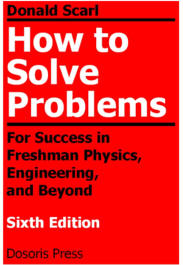Preface
To solve science and engineering problems you need to know science and engineering.
You also need a tool-kit of problem-solving methods.
This book describes the methods professional problem solvers use, explains why these methods have evolved, and shows how to make them your own. You can use these problem-solving methods now for homework and examinations. You will use them in your later professional work to help you define useful problems, solve them, and convince the world that the problems are important and that your solutions are correct.
Starting with the pioneering work of Polya, many authors have written self-help books and scholarly books on problem solving. These books are about the thinking part of problem solving: how to generalize, specialize, particularize, brainstorm, and so forth. They are especially useful for design problems in which part of the solution may lie in redefining the original problem.
This book, in contrast, emphasizes the simple actions that professional problem solvers take to analyze and solve already defined problems. It explains how to set up and solve problems that you did not think you knew how to solve. It describes the statement, organization, and presentation of scientific and technical material. By teaching problem-solving style, it attempts to do for problem solvers what Strunk and White’s Elements of Style has done for writers.
It is a pleasure to acknowledge Eric Rogers, Jay Orear, and George Wolga, who by their instruction and example helped me learn how to teach. Hilda Bass, Barbara Cohen, Lorcan Folan, Robert Folk, Judith Scarl, Romualdas Sviedrys, Robert Swart, Larry Tankersley, and Alan Van Heuvelen read and improved manuscripts of this or previous editions. I have enjoyed a discussion with Annalisa Crannell about her methods of teaching mathematical writing.
Please send comments about this edition of How to Solve Problems to Dosoris Press.
